Don M. Winn's Blog, page 29
November 7, 2013
Falconry Part One – Medieval and Modern Falconry
 What do castles, knights and falconry all have in common? They are all part of my second Sir Kaye medieval adventure book, The Lost Castle Treasure. I’m hard at work on it now, and that includes lots of research on the history of castles and falconry.
What do castles, knights and falconry all have in common? They are all part of my second Sir Kaye medieval adventure book, The Lost Castle Treasure. I’m hard at work on it now, and that includes lots of research on the history of castles and falconry.
Falconry is the art of training birds of prey (raptors) such as falcons or hawks to hunt along with a person. It was an important part of medieval life—a well-trained goshawk could be a main contributor to the family diet. At the beginning of the Middle Ages, falconry was less of a sport and more of a means to provide food for the table.
Think for a moment about the limited technology of the middle ages. Think about the back-breaking labor involved in trying to grow food using clumsy plows and primitive scythes under uncertain weather conditions. Tools for hunting were spears and bows that were basically made out of sticks and strings. Now think about having the assistance of a hawk or falcon when it comes to supplementing the family diet. Imagine how incredible it would have been to make use of its keen eyesight, incredible speed, and deadly accuracy when it came to feeding your family. Hawks and falcons were really the height of hunting technology during the Middle Ages.
As an interesting contrast, falconry today is a direct link to the past because it has changed very little since the Middle Ages. So in order to do some research for my next book, to get a better understanding of falconry, and to try to make a personal connection with some living history, I contacted the Texas Hawking Association and connected with Lynne Holder, a local falconer in the Brenham, Texas area. (Brenham is also where you can take a Blue Bell Ice Cream tour.)
Note on falconry terminology: Birds of prey are known as raptors. Raptors commonly used in hunting include both falcons and hawks. Today the term falconry refers to the training and flying of any type of raptor. Falconers (those who practice the art of falconry) call their raptors hawks (even if their raptor is technically a falcon).
Lynne was very gracious and generous with her time and not only invited me to spend the day with her and her Harris’ Hawk, Dart, but she also agreed to be interviewed for this blog. As there is so much to tell about falconry, it’s a bit too much information for one blog post so I’ll be splitting it up over several blogs in the weeks ahead, including the interview with Lynne.
Chances are that some of my blog readers may know very little about falconry and may have a few questions about it. A common first concern that many people have is “How does the bird feel?” or “What’s in it for the bird?” The answer to that question may surprise you, as it did me.
The truth is that a hawk—even a trained hawk— is not a pet but a wild animal. A falconer may love the hawk, as Lynne does Dart, but the hawk doesn’t love the falconer back. The hawk sees it as more of a working relationship. The hawk tolerates the falconer because there’s a benefit in doing so. The benefit is that the hawk is well fed and well cared for. That’s why a hawk—despite being completely free to fly away at any time during a hunt—usually returns to the falconer. The hawk knows it would be giving up an easy meal ticket if it left.
Check back next week for some highlights from my day with Dart.


October 31, 2013
Is Your Child Slipping Through The Cracks In The Academic System?
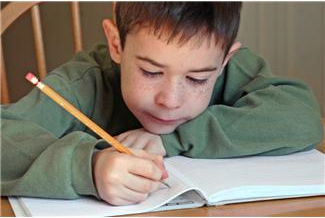 Wouldn’t we all like to live in a world where our strengths are recognized, our weaknesses are supported, and all of our unique gifts are honored?
Wouldn’t we all like to live in a world where our strengths are recognized, our weaknesses are supported, and all of our unique gifts are honored?
I know I would.
And I know that most parents really would like to make that ideal into a possibility for their children both at home and at school. What if you, as a parent, feel like your child may have fallen through the cracks in the academic system? What if you feel like their needs are not being met? What can you do?
You can ask that the school provide your child with testing that will identify their particular strengths and weaknesses so that their gifts can be nurtured and their areas of difficulty can get any needed extra attention. Dr. Scott Barry Kaufman, Ph. D. and author of the book Ungifted, Intelligence Redefined, suggests that parents ask that their child be given “a comprehensive battery of IQ and achievement tests adopting the cross-battery approach to assess the various specific cognitive abilities that are part of the Cattell-Horn-Carroll (CHC) Theory of Cognitive Abilities.”
The CHC Theory of Cognitive Abilities works on the idea that people can show different levels of ability in different areas. If your child is evaluated using the CHC type tests, it will provide a more comprehensive, individualized picture of his or her strengths and weaknesses than a traditional one-size-fits-all IQ test.
Testing based on this theory assesses your child’s ability in nine specific categories: quantitative reasoning, fluid reasoning, visual processing, reading and writing ability, short term memory, auditory processing, comprehension and knowledge, long term storage and retrieval, and processing speed.
Depending on your school district, it may be possible that a school psychologist can use the results from these tests to design a specific program to address your child’s strengths and weaknesses.


October 24, 2013
Modern Tools for Reluctant Readers
 If I were a kid in elementary school today, the most helpful thing my parents could do for me as a dyslexic student would be to take advantage of modern technology.
If I were a kid in elementary school today, the most helpful thing my parents could do for me as a dyslexic student would be to take advantage of modern technology.
Here’s a list of some great ideas that could really make a difference in your child’s life if they struggle with reading. Please note that I am not a paid spokesperson for any of these products and I have not received any compensation for this article.
Imagine, if you will, a digital device that not only has the ability to read books aloud to a struggling reader, but it also provides easy access to the definition or pronunciation of an unfamiliar word. Some Kindle models (including some of the older models) offer this feature, however, not all digital books are text-to-speech enabled: Amazon identifies those that are not enabled in their product descriptions. Even so, having an easy dictionary at hand alone would make this a helpful tool for any challenged reader. And please note that while any smart phone can download a Kindle application, text-to-speech only works on Amazon Kindle devices, not on other smart phones or tablets.
I just learned that the newest Kindle Paperwhite will save the words that a reader looks up in the dictionary and then will generate flashcards with those words for later use. How helpful is that?
Additionally, Mac computers offer a reading voice feature on most of their computers that can be used on data files and digital books, while iBooks on the iPad includes easy access to word definitions in ePub files.
If you prefer the engaging option of professionally read audiobooks in MP3 format rather than a computerized voice reading to you or your child, you have some options. As mentioned, some of the well known sites may charge twenty to thirty dollars per audiobook, which can be prohibitive for most families. Happily, there are free or donation-based options that are not exclusive:
http://www.gutenberg.org/browse/categories/2 Offering thousands of free audiobooks in dozens of languages, the Gutenberg Project is a resource for the classics
http://www.librophile.com/ Librophile lists the price of each book: 0.00.
http://audiocloset.com/ another free site
http://www.seeingear.org/ A British site, free to those who are print-disabled.
http://www.booksshouldbefree.com/ the title says it all
https://www.learningally.org/ some fees apply on this well stocked audio site
Ideally, readers will also have a print or digital version of their audiobooks in which to follow along as they listen.
For older students, help is also available in the form of voice-recognition dictation software. Dragon software works well for many people, but there are others available as well. Using a dictation app is one way to minimize the frustrations of writing and spelling challenges, and it frees a student to be more creative and add detail to their work.
Finally, an option for the classroom: software called NEO 2. This device helps dyslexic or other challenged readers and writers take notes in class, without the need for struggling with pencil and paper. It also offers text-to-speech and has math features available.
True, I had none of these advantages as a young challenged reader and student, and I survived. But how grateful we can all be for being alive in a world that offers us and the next generation of students with learning differences these wonderful tools now.


October 17, 2013
Teaching Toddlers Who Are Learning Language
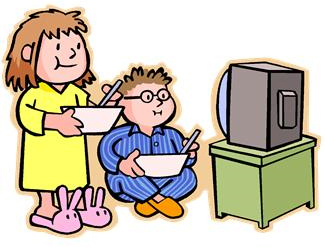 We have become a nation of “parkers.”
We have become a nation of “parkers.”
What’s a parker? We park in front of the television or we park in front of the computer screen and as a consequence, we have greatly reduced our interactions with each other.
Even young children can become parkers early in life because parents are tired, busy, distracted, maybe working more than one job, and also dealing with their own issues. Often the path of least resistance for many families is to park the kids in front of the television or in front of the computer screen as a way of keeping them busy, entertained, and safe.
The good news is that there is more educational programming available than ever before. So it’s hardly a wasteland, in terms of educational opportunity, for the discerning parent.
But do educational venues on TV have the same language teaching value for a young child as personal interaction with parents?
A study released September 24, 2013, from the University of Washington, Temple University, and the University of Delaware, shows that the answer is a definitive no.
The psychologists conducting the study compared the results of instructing two-year-olds in three different ways. The first group watched pre-recorded video of a person teaching them. The second group listened to live instruction. The third group received interactive instruction via Skype.
The study results showed that children only learned new words when conversing with a person or having a live video chat.
What made the difference?
Children learn best when they have back-and-forth social interaction with another person.
The children that learned in real-time social interaction were even able to use the newly learned vocabulary to identify actions when different people performed them. There was genuine brain integration of the new words.
This new information offers adults one more good reason to make the time to have meaningful social interaction with the young ones, even toddlers, in their lives. Lap reading and talking about what’s been read is one great way parents can help get the next generation off to a good start. Don’t forget that the number of words children learn before they start school has a direct bearing on how well they perform in school. See my earlier post about the power of teaching children many words.
So if you need to park your kids in front of the TV, go ahead. We all do it. But be sure to buy out some time every day to interact with your kids and to teach them something in person.


October 10, 2013
Building Perseverance in Children
 Winston Churchill said, “Continuous effort—not strength or intelligence—is the key to unlocking our potential.”
Winston Churchill said, “Continuous effort—not strength or intelligence—is the key to unlocking our potential.”
For someone like me who grew up with learning challenges, hard work was the rule of the day. With my reading and writing processing issues, all attempts at learning and school assignments could probably have been considered heroic efforts on my part. Unfortunately, all that effort was never recognized. Instead, the emphasis was always on what grade I got. Did I pass or fail? Did I win or lose? How many did I miss? How many did I get wrong?
It was somewhat discouraging, to say the least.
Back in 1992, Professor Harold Stevenson of the University of Michigan published research that explains the role perseverance has in success. After spending years analyzing student achievements in the United States, Japan, China, and Taiwan, Stevenson reached a critical conclusion: the key to success lies in what parents choose to emphasize about their children’s learning.
Stevenson observed in his study that Asian parents strongly stress the value of hard work and effort with their children. They consistently conveyed the message, “Work as hard as you can, and then you will be successful.” By expecting their children to work hard, they nurtured perseverance in their children. And according to this study, those parental expectations have a remarkable effect on children. The researchers discovered that as a group, Asian children worked longer hours and more intensively than their American counterparts because they recognized that their success was based on how hard they worked. Even though grades certainly mattered, by focusing on effort and on sticking to a project in spite of its difficulty, the grades took care of themselves.
In contrast, American parents tended to emphasize their children’s innate talents and abilities. Professor Stevenson also observed a strong tendency for American parents to lower their academic expectations if they perceived that their children had lower academic abilities or learning challenges.
The Asian model embraces a different philosophy: any child can succeed regardless of their learning challenge or IQ score—success is all a matter of how hard one is willing to work.
Stevenson’s insightful research in child psychology and its place in the classroom and at home emphasizes the fact that parents especially need to change their focus and communication style with their children if they want to build perseverance in their children.
Just imagine the long-term effect it could have on children if we spent more time recognizing their efforts and encouraging them to keep working hard in spite of challenges!
Kids can learn from a very young age that there is nothing to stop them from succeeding if they put their heart and soul into an endeavor. Mistakes, failures, and learning struggles are not excuses to quit. Rather, they are temporary setbacks and challenges that allow us to discover what works for us and our learning/processing style.
Here are a few questions parents can reflect on:
What subtle messages do I send my children about my expectations of their abilities?
Do I model perseverance for them, or do they see me demonstrating a low threshold for frustration?
When they bring schoolwork home, do I praise their efforts or only notice the grade?
When was the last time I noticed and praised my child’s tenacity and stick-to-itiveness?
Am I more likely to reinforce the value of hard work or only the end result?
Seeing children reach their potential is one of the most joyful things a parent can experience. To help them unlock their potential, as Churchill enjoined, parents can make a conscious effort to shift their focus to noticing and praising their children’s hard work and tenacity.


October 3, 2013
Learning to Listen
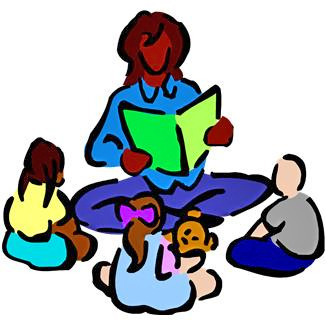 Way back in 1984 the researcher Thomas Sticht discovered the important fact that reading does not catch up with listening until late middle school or early high school.*
Way back in 1984 the researcher Thomas Sticht discovered the important fact that reading does not catch up with listening until late middle school or early high school.*
What does this mean?
Basically, in elementary school, most children are learning to decode. They do not learn to read until eighth grade or later.
E.D. Hirsch, author of The Knowledge Deficit, explains the difference between reading and decoding. He calls decoding the sounding out of words from written marks, and only uses the term reading for understanding what those words mean. Most children can sound out basic words, but they usually don’t understand the meaning of those words. They can decode words, but they aren’t reading.
The connection between listening and reading is this: if decoding goes with sounding out (and therefore hearing), then reading goes with listening.
Teaching kids to listen will help them learn to read sooner and better.
CKLA (Core Knowledge Language Arts) is a reading program designed to make use of this idea of decoding versus reading with excellent results. Its main vehicle for building knowledge is read-alouds. As children practice listening, they build their general knowledge and their understanding of words and word usage, which improves their overall comprehension and reading abilities.
Some educators may feel that listening is too passive an activity, but brain scans done by Dr. Bennett Shaywitz of Yale on people while they are listening prove that listening is very active indeed.
Why is it so important for kids to learn to listen?
Just like an internet connection, our brains have bandwidth, also referred to as channel capacity. In youth, the bulk of our channel capacity is taken up with the arduous process of learning and applying decoding, leaving little mental space left over to process new or difficult meanings. For children, the struggle to decode is the main barrier to understanding the written word.
Although learning to decode is important, it may take many years before a student masters the ability to decode well enough to learn efficiently from the written word. So during those decoding years, the most efficient way for kids to increase their knowledge and vocabulary is through listening.
How can I help my kids learn to listen?
A great way to help kids learn to listen is to keep up (or start) reading aloud with them. Listening to you read and talking with you about what you just read builds their general knowledge and vocabulary and strengthens their listening ability.
Interestingly, Thomas Sticht’s research showed that early listening ability predicts reading ability many years later. Learning to listen at a high-level is closely connected with learning to read at a high level.
Once again, current science underscores the tremendous importance of regularly reading to children and having meaningful discussions with them. Very little in life will pay off such rich dividends.
*T. G. Sticht and J. James, “Listening and reading,” in P. Pearson, ed., Handbook of Research on Reading. New York: Longmans, 1984. (1984)


September 26, 2013
Protecting Kids From Cyberbullying
 Most parents would agree that bullying is a big problem in schools. And parents frequently find themselves being proactive in terms of monitoring what’s going on in the schoolyard. But some may not be aware of the fact that bullying can continue to happen within the safety of their own home via cyberbullying. What can parents do to help?
Most parents would agree that bullying is a big problem in schools. And parents frequently find themselves being proactive in terms of monitoring what’s going on in the schoolyard. But some may not be aware of the fact that bullying can continue to happen within the safety of their own home via cyberbullying. What can parents do to help?
With the increased use of technology, children today are growing up as natives of a digital world. According to a study published September 5, 2013, 93% of teens use the Internet and nine out of every 10 children have access to a computer at home. Even fairly young children may have smart phones with internet capability. However, despite young people’s comfort and familiarity with this digital world, this study also found that most students have very limited knowledge about internet safety when it comes to protecting themselves from cyberbullying.
The study concluded that unless parents monitor children’s online activity and teach them the risks of inappropriate or risky online behaviors, their children stand a good chance of becoming victims. So here are some practical tips for parents:
Be aware of what constitutes cyberbullying. Cyberbullying can include the following kinds of harassment:
Verbal: name-calling, teasing
Social: leaving people out on purpose, spreading rumors and lies, sabotaging friendships
Psychological: forcing people to do things against their will, threatening them
Racial: disparaging others on the basis of their race or ethnic heritage
Intellectual: making fun of those who struggle with learning challenges, shaming them
Sexual: inappropriate pictures or remarks
Be aware of warning signs that your child may be a victim of cyberbullying, including the following behaviors:
Missing school from fear and anxiety
Becoming antisocial
Having trouble studying and concentrating
A change in sleep patterns
Depression
Traumatic stress symptoms
A desire to be isolated from the world
An increased use of, or dependence on, technology
Suicidal thoughts and tendencies
A lack of trust
A change in appetite
Unexpected or random outbursts of anger
Teach your kids how to protect themselves online. The NO BULL Youth Advisory Council offers these suggestions for staying safe using social media:
Protect your passwords. Never give your passwords to anyone except your parents.
Think about the words and pictures you post before you post them.
Do not connect with strangers.
Set your privacy settings on all social media to private.
Limit personal information on your account.
Block and report people you don’t know from posting on your account or people who are doing inappropriate things.
Don’t be afraid to delete your Facebook account, or call your wireless provider to block cyberbullies.
Taking the time to discuss these points with your kids and helping them use technology safely will be time well spent.


September 19, 2013
Opening the Mind’s Eye
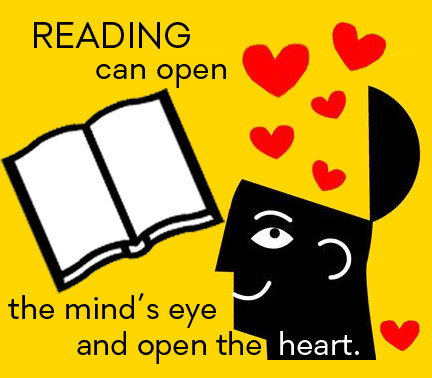 The other evening when I was looking for something light-hearted to watch on television, I happened upon The Princess Bride. I hadn’t watched the movie in many years but this time around I saw the movie from a totally different perspective. In the opening scene a young boy (played by Fred Savage) is sick in bed when his grandfather (played by Peter Falk) comes to visit. But this isn’t just an ordinary visit. The grandfather came specifically to read a book to his grandson, a story his own father read to him when he was a boy. The story, of course, is The Princess Bride. The grandfather says, “In my day, a book was our television.”
The other evening when I was looking for something light-hearted to watch on television, I happened upon The Princess Bride. I hadn’t watched the movie in many years but this time around I saw the movie from a totally different perspective. In the opening scene a young boy (played by Fred Savage) is sick in bed when his grandfather (played by Peter Falk) comes to visit. But this isn’t just an ordinary visit. The grandfather came specifically to read a book to his grandson, a story his own father read to him when he was a boy. The story, of course, is The Princess Bride. The grandfather says, “In my day, a book was our television.”
That scene brought back memories of my childhood and how much I relished being read to. I would get completely lost in the story as I pictured every scene, every character, every interaction in my mind’s eye—it was truly magical and effortless. From my recollection, I can honestly say that it was as good as, if not better than, watching things on television. Indeed, the severity of my dyslexia was such that there were few effortless mental processes in my world, but listening to someone read was a time of pure joy when all struggle dropped away. I felt connected to, rather than different from, other people.
Most children love to listen to stories being read and they have an innate ability to visualize the story with ease. But as we grow older, a sad thing often happens. We gradually lose the wonderment, the pleasure and the ease of listening to a story and exercising our imagination. A dimming of the mind’s eye can occur.
It reminds me of the effortless and happy physical activity of childhood. Kids can spend all day running and jumping and playing and they love every minute of it. But as adults we at times have to force ourselves just to get a minimal amount of exercise each day.
How can you keep the wonderment of story time alive in your children? And what about any adults who feel they may have lost the wonderment of story time? Is it lost and gone forever? Can we rekindle a bright and curious mind’s eye once more?
The importance of reading to each other, even to another adult or to our adolescent children, was brought out in a recent discussion among friends. Most of the group had good memories of being read to as preschoolers, but interestingly, once we entered public school, it became far less common to have people read to us. It was as if only those who were too young to read for themselves got story time.
But as we shared memories, we recalled special high school or college teachers who read to us from Shakespeare, George Eliot, Tolstoy, Lewis Carroll, Jack London, or Willa Cather. Those memories were powerful, often intensely charged with emotion. We felt nurtured and special. We were able to connect with reading material that may have otherwise seemed daunting or outdated. It reinforced the community and kinship that all humans have shared down through the centuries as we find our places in the world and deal with our personal struggles.
What would happen if more families turned off the TV or the game console once in a while and read together? How about picking a classic title and making a project of it, reading for a few minutes each evening? Audiobooks are also a lovely indulgence, especially for those of us in urban areas with long commutes. A lengthy tome like The Count of Monte Cristo may seem overwhelming at 47 hours of listening time, but if you are in your car a couple of hours a day, the time passes quickly and your day has been enriched beyond measure.
Cultivating our curiosity, exercising our listening skills and engaging the parts of the brain that bring words to life are all part of sharpening the mind’s eye. When we exercise our minds through sharing great books with those we love, it builds lasting memories and close bonds.


September 12, 2013
What Helps (Or Hurts) Kids the Most
 If Betty Hart and Todd Risley aren’t household names now, they should be. These two doctors published research in 1996 that has immense value for every parent and every child in the country.
If Betty Hart and Todd Risley aren’t household names now, they should be. These two doctors published research in 1996 that has immense value for every parent and every child in the country.
While studying groups of four-year-olds, these doctors observed that some children were already advanced and some were very far behind. They looked for a reason that would explain these differences.
Source Material: http://www.aft.org/newspubs/periodicals/ae/spring2003/hart.cfm
They divided families into three socioeconomic groups: welfare, working class, and professional. They began collecting data when the children were seven months old, visiting study participants for a total of 1300 hours. What were they measuring? They were measuring and categorizing every word said in front of each child. All the participating parents demonstrated love and care for their families; the basic instincts of good parenting held true across all demographics, so that was not the issue.
The difference was the words.
According to Hart and Risley’s research, on average, by four years of age, children from professional families will have heard 45 million words, working-class children 26 million, and welfare children only 13 million.
When children show up for kindergarten, it’s not the price of their toys or their family’s economic status that makes a difference in their abilities and confidence in school. It is how many words they have already learned. And some children will have heard 32 million fewer words than others.
The most obvious difficulty this can cause is that it can be hard for students to learn if their teachers are using words they just don’t know.
But the children’s language experience did not differ just in terms of the number and quality of words heard. The study also measured encouraging words versus prohibitions or negative statements. The differences were staggering.
The average child in a professional family would have heard 560,000 more instances of encouraging words than discouraging feedback. A child in a working-class family would have accumulated 100,000 more encouragements than discouragements. But an average child in a welfare family would have received 125,000 more instances of negative feedback than encouragement. Think of the implications of this for children’s self-worth, self-esteem, and belief in their future possibilities.
Each child’s educational development begins in the home at birth, not when they begin attending public school. Documentation abundantly and overwhelmingly shows that parents spend less time than ever with their children, especially time spent reading together and discussing what they have read.
Reading with your kids and talking with them is a great way to give them words, including encouraging words. If you feel like your own vocabulary is limited, books are a wonderful source of new words. Even hearing a word once can make it easier for a child to learn that word again in the future.
The research described in this paper is not intended to insult or offend people of any socioeconomic status. Rather, the conclusions are clear: you don’t need any special qualifications to talk with a child and read to them.
Start now. Every moment counts.
Check out some of my earlier blogs on this subject:
Use Your Words!
Raising WordKids…Be WordParents!


September 5, 2013
Parenting With Dyslexia: Reading With Your Kids
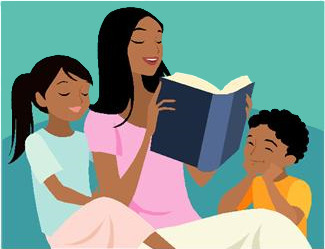 Back in 2009, a British television show called Bookaboo polled 2000 parents and discovered that only 3% of fathers actually read to their children. When asked, 87% of the dads who didn’t read to their children blamed work for stopping them from reading while 34% said that they were just too tired to do it.
Back in 2009, a British television show called Bookaboo polled 2000 parents and discovered that only 3% of fathers actually read to their children. When asked, 87% of the dads who didn’t read to their children blamed work for stopping them from reading while 34% said that they were just too tired to do it.
This caught my attention, because it’s true that all parents (moms and dads) are busy and tired and most jobs are demanding. It can be a real struggle for parents to find the time to read with their kids. Then I thought about dyslexic parents like myself. Dyslexic parents are also tired and busy and they also have demanding jobs.
Imagine how hard it is for most parents to find the necessary time and energy to read with their kids, and then add in the complicating factor of being a dyslexic parent and trying to summon the extra concentration necessary to do the actual reading.
Reading is simply more work for a dyslexic person. I remember when my son was young, I had no trouble reading with him in general, but at the end of a long day, it took an unusual amount of effort for me to focus on the written word.
What if you, as a parent, also have a challenge like mine when it comes to reading? Or what if you’re so tired that the idea of reading with your kids is overwhelming? Here are a few ideas:
If you have a new picture book you’ve never read before, look at the pictures together and guess at the storyline. Read it together at another time.
Use a familiar picture book and prompt your child to make up a new story using the existing pictures. You could even combine pictures from several picture books in the new story.
Read the same book you read yesterday (and the day before that and the day before that). Kids often love reading the same books over and over again. This is a bonus for parents who have reading challenges, because reading the same thing repeatedly will make it easier to read aloud each time.
Listen to audiobooks together and pause from time to time to talk about what happened in the story or what you think will happen next.
Don’t worry about reading. Tell your kids stories…stories you liked as a kid, stories about things you did as a kid, stories about your favorite pet they never knew…or make up your own story to tell them.
The point is that there are always alternatives if reading aloud is simply not doable one day, or if you would like to add a little variety into your reading aloud routine. Spending time talking with your children about books or stories is what’s most important.
So whether you are a busy, tired, stressed-out parent or a busy, tired, stressed-out parent with a reading challenge, don’t give up on reading with your kids. The educational benefits of reading with kids are amazing, but the closeness and trust it creates between you and your children has no substitute.
When do you find the time to read with your kids? Post a comment below and share your ideas.





